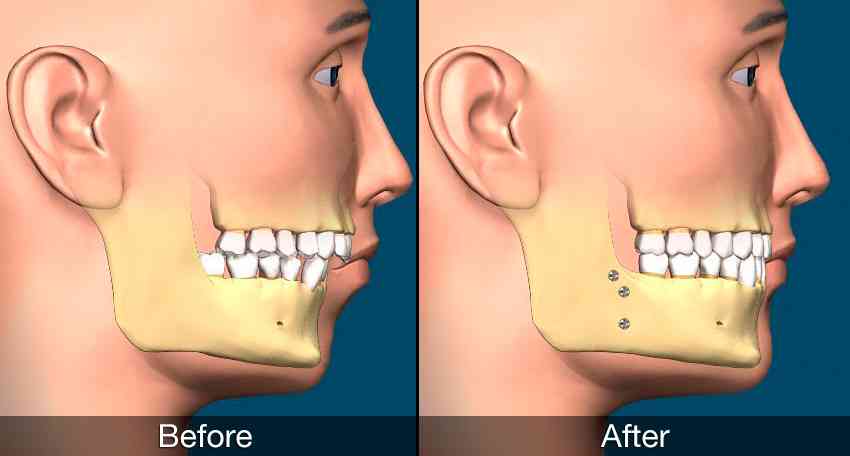
A great smile requires more than just straight teeth. You need straight jaws, too. That’s where surgical orthodontics comes into play. While orthodontics focuses on the process of straightening your teeth, surgical orthodontics (orthognathic surgery) straightens your jaws.
Why do you need straight jaws? When your teeth fit together well, it’ll make it easier for you to bite, chew, even breathe. And properly aligned jaws reduce bruxism.
That translates into healthier teeth and less chance of developing disease or deterioration in surrounding joints. Surgical orthodontics may even improve your appearance, since poorly aligned jaws can affect facial balance and aesthetics.
Straight to the Point
Surgical orthodontics isn’t for everyone. Who might benefit? People with an improper bite and those with jaws that are positioned incorrectly, such as an extreme overbite or cross bite. If you’re wondering if that’s you, think about whether you have an open bite with space between your upper and lower teeth when your mouth is closed, a protruding jaw, a receding chin or trouble making your lips meet. Ultimately, your dentist, orthodontist and oral surgeon will work together to determine whether orthognathic surgery is right for you.
Mapping Out a Treatment Plan
Jaw surgery is just one step in your overall orthodontic dental care plan. Your orthodontist will create a three-phase approach to your dental treatment, which lasts between 12-24 months:
Pre-Surgical Orthodontics — During this stage, your orthodontist will put dental braces on your teeth. The dental braces will move the teeth into a new position, one which will fit together better after oral surgery. This phase lasts until your teeth reach the desired position for surgery.
Surgery — Jaw surgery is performed under general anesthesia by a dental specialist called an oral and maxillofacial surgeon. The surgery can be performed in a hospital, in another surgical facility or in your surgeon’s office. Depending on your needs, surgery is performed on the upper jaw, the lower jaw or both. The surgeon will cut jaw bone and reposition the bone segments. Incisions are made inside the mouth, leaving no scars on the chin, jaw or area around the mouth. The procedure lasts anywhere from one to several hours, depending on the amount and type of dental surgery you have.
Post-Surgery Orthodontics — This phase begins within eight weeks of surgery. Once your jaw is properly aligned, the fine tuning begins. Your orthodontist will continue to adjust the position of your teeth until they reach the optimal location.
Your Road to Recovery
It’ll take a couple of weeks after surgery before you can return to your normal activities. Some swelling, bruising, pain and bleeding may occur during this time. Some patients experience numbness or tingling in the lower lip, which usually returns in time. In rare cases, this feeling persists permanently.
The initial healing process takes about six weeks. You will probably spend part of this time on a no-chew diet, eating foods that are easy to swallow such as soup, mashed potatoes and yogurt. You will also need to take care not to do anything to bump your jaws out of alignment, such as excessive chewing, smoking, contact sports and other strenuous activities.
Sit Back and Smile
Jaw surgery is no small undertaking — not only does the surgery require a long recovery time, but the full benefits may take a while to obtain. For some, especially those with very real structural problems, orthognathic surgery will not only improve your dental health, it’ll improve the way you look!




